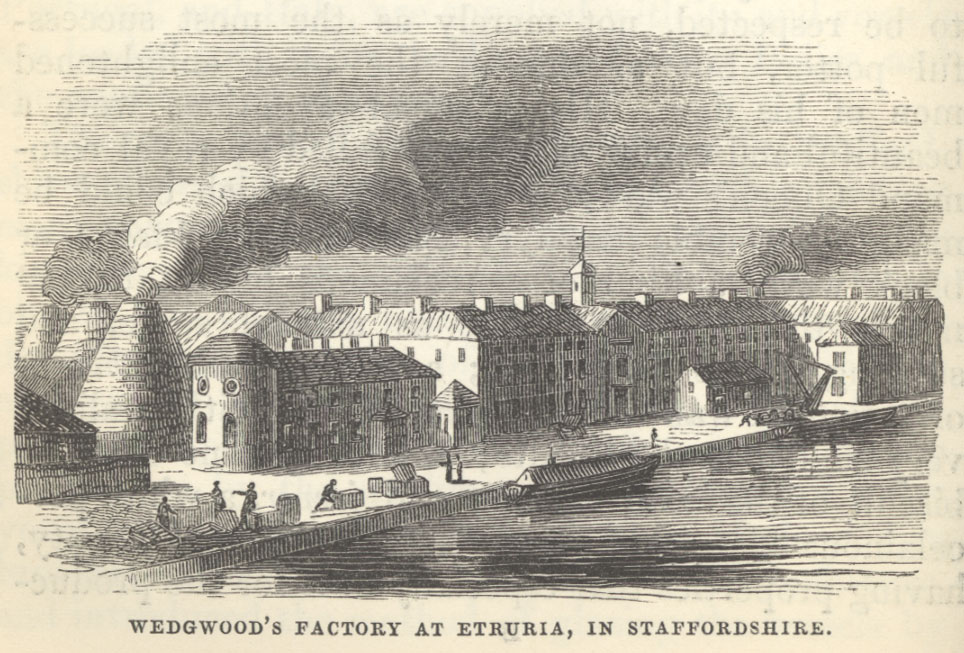Ralph Wedgwood: Pioneer of Office Copying
Image: Wedgwood’s factory at Etruria in Staffordshire. The Useful Arts and Manufacturers of Great Britain of Great Britain Vol. 2 (London, SPCK, 1846?).
Ralph Wedgwood (1766-1837), the son of Thomas Wedgwood, cousin and business partner of Josiah Wedgwood I, was a potter and inventor. Brought up at Etruria, he made crucial contribution to the ceramics industry through his introduction of borax fluxes for glazing.
Ralph Wedgwood also invented devices for copying writings and drawings. The most influential of these, the forerunner of the once ubiquitous carbon paper method of duplication was patented in 1806. Josiah Wedgwood II provided a loan of £200 to produce the invention and its success can be measured by Thomas’s estimate that in the first seven years it had made £10,000 in profits. He also had a project for writing at different distant places by one act at nearly the same instant that suggests he had in mind some form of telegraphy.
In 1824 he successfully defended his daughter against a charge of theft. A drawing “book” of his invention with transparent leaves, which were duplicated by the carbonised paper, was employed to demonstrate the falsity of evidence given against her. Ralph was a poor businessman and, in the long run, received scant remuneration or recognition for any of his inventions some of which were successfully developed by others.
Sources and Further ReadingWedgwood Archive Keele University- E27 19396-19506






